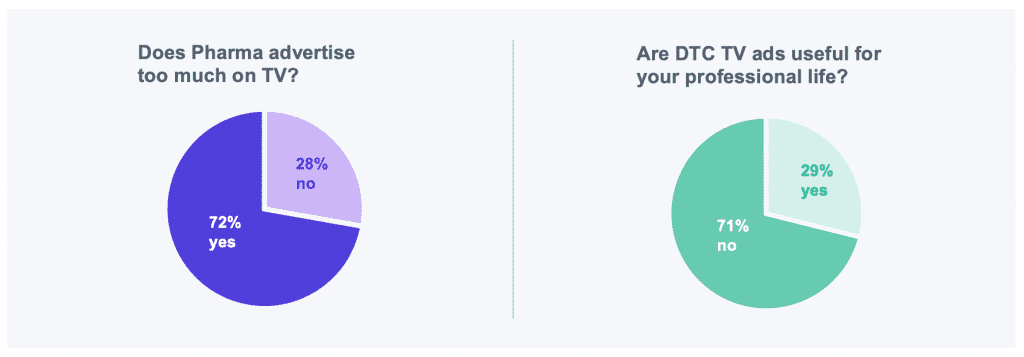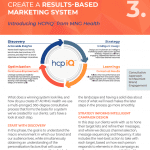
Digital Health Coalition Newsletter – May 2019

FEATURED CONTENT: Summary of the DHC Northeast Summit 2019 (held at AMAG Pharmaceuticals)

Earlier this month, DHC members gathered at AMAG Pharmaceuticals for the DHC Northeast Summit.
Industry leaders and subject matter experts came together to discuss several topics important to innovation in digital health marketing. As with all DHC events, themes for the afternoon were selected through collaboration among a number of key stakeholders.
In this case, the content focused on three areas: Structuring for Innovation in the Post-Mobile Age, The Digital World and How the HCP Fits In, and The Customer Experience.
PART 1: Structuring for Innovation in the Post-Mobile Age
DHC members widely agree, we are firmly within the ‘post-mobile’ age. No longer do marketers discuss a “mobile first” strategy any more than do we still attempt to silo digital as a tactic or channel. While there are still mobile-specific advancements (more on tele-medicine below), we live in an age where the personal screen is ubiquitous. Beyond the concept of “cutting the cord”, personal desktop computer ownership has been on a slow decline over the last decade, while over 95% of Americans own a cellphone. This is the reality in which smart marketers are building their marketing plans.
HCB Health’s Colin Foster walked attendees through several important data points to help better frame the understanding of how this post-mobile age intersects with personal health management, starting with the concept that consumers are engaging with health content at scale, with chronic disease categories presenting both the greatest need and opportunity.

And while the landscape is promising, Colin cited a 2018 Spok study on mobile strategies in healthcare to highlight where the road is still bumpy, with especially big hurdles around hospitals and clinical practices, IT infrastructure & policies. And both data security concerns and user mindset/adoption represent roadblocks that marketers will want to work with their partners to better understand as they seek to offer solutions in the space. What should those solutions look like? Colin recommends a focus on compliance/adherence solutions as the top opportunity, as well as adherence-adjacent items like condition education & management and symptom checkers.

 Attendees of the Summit saw some of this in action thanks to a case-study presentation from Ryan Billings, Executive Director, Digital Engagement of AMAG Pharmaceuticals and Robin Sacawa, Senior Program Director at imre Health. Ryan and Robin explained the significant barriers they tackled in launching a tele-medicine program for an AMAG brand, along with a third-party partner.
Attendees of the Summit saw some of this in action thanks to a case-study presentation from Ryan Billings, Executive Director, Digital Engagement of AMAG Pharmaceuticals and Robin Sacawa, Senior Program Director at imre Health. Ryan and Robin explained the significant barriers they tackled in launching a tele-medicine program for an AMAG brand, along with a third-party partner.
Echoing much of what Colin shared in terms of the landscape, they expanded on the concept by highlighting the opportunity for tele-medicine as demonstrated by the challenges within a traditional office visit – especially for their product, in the category of women’s sexual health. Office visits are being spent mostly in a waiting room or exam room and very limited face time with a healthcare provider. Combining that with the sensitive nature of the conversation, Ryan explained that they jumped at the chance to try to help patients take the conversation into a virtual space.
Ryan and Robin took attendees along on the patient experience, showing sample educational pieces and activation strategies. Since this particular approach was focused first on educating women about the condition and then converting them to a platform carefully selected to handle the actual virtual doctor visit, they outlined how they navigated internal challenges for this previously uncharted territory. Their advice to other marketers looking to achieve similar tele-health results focused on two fronts:
Step 1: Broaden Your Village
You may need to broaden your “village”. While you might normally engage with teams like MLR, brand and digital, you will want to cast a wider net here. Recommended groups to connect with internally for telehealth include: Head of Cyber Security, Head of Procurement, General Counsel, Outside Counsel, Chief Compliance Officer, and Chief Commercial Officer.
And when you look to outside tele-health partners, make sure there’s significant expertise around both customer experience (mobile-friendly, chat functionality, push notifications, secure email functionality etc.) and operational + compliance criteria (HIPPA compliance, platform integration, technology maintenance, speed to market, implementation/level of support etc).
Step 2: Educate Your Audience
Start by educating your audience. Help them understand how tele-health works, what it costs, how credentialed the healthcare provider is, and how their privacy is ensured. Once you’ve achieved the education, then you can convert them by retargeting patient populations who have already had a touchpoint your unbranded or branded properties.
And to marketers who are ready to put this advice into action, Ryan and Robin had three tips:
SET EXPECTATIONS
“Telehealth is a long term learning process and truly a commitment. It is instant access to care, but it will not be an overnight success”.
KNOW THE AUDIENCE
“A layer of education is needed. It is not the norm, especially in older demos. You need to bring them along and be willing to change your approach.”
BE FLEXIBLE!
“Be willing to evolve your approach and optimize brand assets.”
PART 2: The Digital World and How Healthcare Players Fit In
As the healthcare provider/patient pieces of a brand’s marketing strategy becomes increasingly intertwined, it is imperative that consumer-focused marketers understand the physician landscape (and vice-versa). Attendees of the May Summit were provided an up-to-the-minute look into the “Digital Day of an HCP”, courtesy of Jon Sepp, Senior Director of SERMO. Jon shared recent results of a survey of SERMO members (featuring over 1 million HCPs, as a global physicians-only social network), focusing on how HCPs leverage technology in their day-to-day lives, including TV, social media, and practice tools.
And while it is clear that physicians appreciate the benefits of technology (free quality info & evidence readily available, ease of use, access to peers etc) they have concerns about whether it’s driving things like increased documentation and paperwork, distractions/time waste, the “work is everywhere” problem, and even whether the data they see is accurate. Their concerns don’t stop with the pervasive presence of tech in their lives; when asked about DTC ads on TV 72% said pharma advertises there “too much” and almost the same number (71%) said these same ads are “not useful for their professional lives”.

The question becomes, is the attitude the same towards digitally-served tools? While 73% say that they have to frequently clear up misinformation brought in by patients thanks to “Dr. Google”, they are finding frequent assistance from digital tools within the practice. The most utilized online tool for HCPs was medical research support (61%), while others like secure text messaging (23%) and telehealth (14%) not yet showing wide-spread adoption.
Colin Foster, HCB Health, provided additional insights into doctor attitudes towards mobile health support for adherence, noting that 93% of doctors say mobile apps can enhance the quality of patient health. Top reasons cited included rural-based MDs who can use telehealth apps, opportunity to use apps to improve physician efficiency by streamlining data entry, and mobile health solutions providing decision-support + improving communication between specialists/care team.
 In addition to the insights from the SERMO network, the DHC also convened a panel of HCP marketing experts to further discuss both present challenges and opportunities for innovation. The panel included:
In addition to the insights from the SERMO network, the DHC also convened a panel of HCP marketing experts to further discuss both present challenges and opportunities for innovation. The panel included:
- Azita McDermott, Director for Neurology and Immunology, EMD Serono
- Donald Hanson, VP, Client Services, Intouch Solutions
- Doug Rutz, Chief Revenue Officer, MNG Health
The panelists were quick to agree that one of the central challenges speeding adoption of new approaches is the significant changes in the landscape. As explained by Azita McDermott, “one of the trends that continues in the HCP landscape is physicians’ time is crowded. They don’t have time to spend with their own patients, much less spend with our sales reps. This is an area where digital channels really helps us.” Doug Rutz of MNG Health expounded on the challenge, saying “the physician time is of the essence, but in parallel, we’re seeing more and more information available and digestible, yet the time to actually be able to get through it is a common complaint from physicians. They just don’t have the time to digest it.”
The panelists were also presented with recent research conducted by the DHC which indicated that while available data now gives marketers the ability to target doctors on a very granular level, the messaging innovation hasn’t caught up. When asked how they felt about that judgement, the panelists offered some push-back. Azita offered the perspective of a senior marketer building digital HCP eco-systems.
“The difficulty in delivering truly personalized messages is limited resources, especially on our side in the pharma world. How do we balance that personalization of the content in all channels? How do we augment what the field is messaging for example, with HCP segments, and then emulate that online? You could potentially look at the prioritization of messages versus for HCP segments in digital assets to balance your resources.”
~ Azita McDermott
Donald Hanson of Intouch agreed with her analysis “it’s not only the priority; it’s also how really different are those messages? Does that difference matter to spark change for that physician? Really having a critical eye on those differences to make sure that they’re going to be worth the resource allocation.”
When digging into the idea that data targeting for physicians has reached the desired level of sophistication, the panel challenged the audience to consider several things:
Improve How We Combine Data
We can still improve how we collate and combine HCP data that’s been captured online, especially when considering the idea predictive and prescriptive analytics, in order to get an even more holistic view of HCP behavior. It’s important to understand and critically evaluated how the data is stored, who accesses it, and what they do with it. And in organizations where data is largely siloed, a useful exercise may be to explore the potential benefits of a data lake.
Identify Key Business Questions
Identifying what your key business questions are will help you better identify how to pull data and in what format you need to provide it in. Aligning on that concept early internally is key – be strategic upstream, then use the data to inform. The data is there, so make sure you are asking it the right questions.
Strive for Innovation
Strive for innovation that will allow you to get ahead with a segmented message using data, customizing it, and finding the balance between promotion and value to the physician: try to build the relationship. Start with the content and make sure you’re providing that red thread to your HCPs to speak your same language.
Part 3: The Customer Experience
Much of what pharmaceutical marketers find themselves being asked is not “who in pharma is doing it best” but rather “where has [insert major consumer brand]
, or even Amazon, set the bar?” And while we all understand the uniqueness of the pharmaceutical marketing landscape, the pressure to match the non-pharma customer experience only increases. This is balanced with a moment in time where we have increased chatter around the ideas of privacy, pricing transparency and personal data ownership. To help tackle these questions, the DHC Summit brought together a group of subject matter experts that included a senior agency executive, several pharma marketers, the head of a patient influencer site, and Harvard ethics lawyer.
Sarah Gerke, Research Fellow of Medicine, Artificial Intelligence, and Law at Harvard Law School offered an impressive overview of the current situation around digital therapeutics, highlighting several points for consideration from a point of view a bit more removed than a typical pharma marketing conversation. Focusing on the two areas of Ingestible Electronic Sensors (IES) and Artificial Intelligence (AI), she first reminded the group that even for individuals that are more skeptical of digital therapeutics, it is undeniable that “digital health can empower patients and consumers to have greater access to information and track their health and wellness-related activities.” However, she offers several cautions:
Caution #1
First, since IES involves elements that are most likely unfamiliar to patients, there has to be a way to ensure that all patients can offer “full voluntary and informed consent.” So when considering potential partners in digital therapeutics, the area of patient consent should be highly scrutinized. This attention extends to how data collected by IES is stored and used. In the case of partnerships, the availability of this data in the hands of third parties could have implications on life insurance premiums, employment opportunities, and even personal relationships for patients, so the current and future use of collected data is a major area of concern.
Caution #2
Second, when considering AI, in addition to the similar question of data collection and use, Sara Gerke summarizes “To realize the potential of AI, I think it’s very important that stakeholders need to make sure of two key things. First of all, the reliability of the dataset, and second, transparency. The used datasets need to be reliable, so the slogan “garbage in-garbage out” applies to AI in this area. The better the training data is the better the AI will perform, which brings us to the third issue, algorithm fairness and biases. The data needs to be used in a way that minimizes the potential for biases. Experts are really concerned that AI could simply automate human biases, such as gender and racial biases, rather than remove them.”
 One example of AI done well, with the patient’s experience and privacy at its fore, was demonstrated in a case study shared by three industry leaders, Kate Rom (Account Manager, imre Health), Christine Waite (Executive Director, Intarosa Marketing, AMAG), and Gena Koufos (Innovation and Digital Health Lead, AMAG). The “Press Pause Chatbot” case study highlighted the opportunity to use AI/chatbots as a way to help patients overcome barriers to treatment for a painful and personal condition, in this case, related to women’s sexual health. The team at AMAG, with their partners at imre Health, focused on attacking three issues – awareness, misinformation, and stigma. The opted to use Facebook as the vehicle for delivery – building a group that would allow for members to both share experiences and access the chatbot in order to get private, personalized advice, using a “build your own adventure” style choice matrix to deliver condition education.
One example of AI done well, with the patient’s experience and privacy at its fore, was demonstrated in a case study shared by three industry leaders, Kate Rom (Account Manager, imre Health), Christine Waite (Executive Director, Intarosa Marketing, AMAG), and Gena Koufos (Innovation and Digital Health Lead, AMAG). The “Press Pause Chatbot” case study highlighted the opportunity to use AI/chatbots as a way to help patients overcome barriers to treatment for a painful and personal condition, in this case, related to women’s sexual health. The team at AMAG, with their partners at imre Health, focused on attacking three issues – awareness, misinformation, and stigma. The opted to use Facebook as the vehicle for delivery – building a group that would allow for members to both share experiences and access the chatbot in order to get private, personalized advice, using a “build your own adventure” style choice matrix to deliver condition education.
In tying together both the innovations and the challenges to building a cutting edge customer experience within pharma, David Goldsmith, Chief Strategy Officer of WEGO Health, conducted a wrap-up panel discussion, including Sara Gerke (Harvard), Ryan Billings (AMAG), and Brian Simmons (SVP, Client Relations, imre Health). This diverse group first discussed the idea of “threading the needle” between creating seamless, user-friendly customer experiences, while still recognizing and acknowledging the complexities of healthcare.
Ryan Billings explained that it’s not just about trying to understand the patient experience, but the broader customer experience – citing his experiences grabbing a mobile-ordered coffee from Starbucks or getting a car from Uber. And while it’s not realistic to think that pharma will operate in exactly the same way, he encouraged marketers to consider how they can find smaller ways to enhance the consumer experience wherever possible, and even more importantly, when there are concerns from the ‘customer’.
“There’s very few pharmas that are addressing patient and customer complaints/issues on social, publicly and proactively. We have the capabilities and the content and the resources to proactively look for these things without being terrified of AEs etc. It would speak volumes to ease customers’ concerns on social.”
~ Ryan Billings
Brian Simmons agrees, and notes that sometimes, this can be achieved through a more non-traditional approach to building the brand team. He suggests investing in the right people on the brand team at the pharma company, mixing up the team by bringing in people who’ve been in more non-traditional roles, both inside and outside of pharma. Sara Gerke added that “it will be very important to show that you have a robust ethical standards and compliance criteria in your company.”
David Goldsmith worked with the panel to consider how this and other approaches might impact consumer trust in pharma, noting that “when you look at companies that are often considered at the top of their game in terms of the consumer experience, they often are also highly ranked from the perspective of consumer trust.” Panelists agree on a few key points:
Key Point #1
Transparency is key, especially around the question of data use. And on the subject of data, think critically about what data you really need to collect.
Key Point #2
Building trust matters. Transparency about data is part of it, but more broadly, we need to improve the perception of pharma so that consumers can trust that the ad units they are served (through data-driven ad targeting) is for the betterment of their health.
Again, the DHC would like to thank the DHC members who participated in the Northeast Summit and to the team at AMAG Pharmaceuticals for hosting.
ADDITIONAL INSIGHTS FROM DHC PARTNERS

Innovating Innovation in Life Sciences
Via Klick Health | Website →
The sorts of activities, especially in the pharma world, that tend to be associated with innovation include things like “Shark Tank” pitch contests, change management initiatives, skunkworks, acquisition of startups, hackathons, venture partnerships, and hiring consulting companies to conduct innovation frameworks. All of these processes may be worthy of producing innovation, but they all tend to be conducted in discrete, independent, and scattered situations. They are typically not tactical, nor are they united in a sustainable long-term strategy of innovation. Furthermore, innovation tends to be connotated with technology and tangible gadgets, which may not help everyday needs. Read more here →

Connecting with HCP Customers through Data, Insights & Action
Via MNG Health | Website →
MNG Health just published a new white paper about how to create a results-based marketing system. “Connecting with HCP Customers through Data, Insights & Action” demonstrates that truly actionable insights – the kind that convince a customer to change her behavior – require a data-rich, systematic approach combined with access to multiple channels and tools that reach customers when and where they’ll pay attention, using contextually relevant, personalized messaging that resonates. The HCP marketing services company also introduces HCPiQ, its multi-pronged, 360-degree consultative process that forms the basis for a planning, design, execution and optimization system it created in collaboration with its clients. Free Download Here →

Time is Running Out for Pharma and Biotech’s Slow Road to Digital Transformation
Via Neil Keene, Intercept Pharma | Website →
The pharmaceutical industry’s implementation of digital marketing and use of a true multiple channel strategy has been under pressure for the past 10 years as virtually every other industry and sector has surpassed them in both customer-centricity and progress in digital marketing. Many pharma companies both big and small have been testing the integration of a customer engagement digital commercial model during this time. Some may ask, Neil, “What exactly is digital transformation?” Read More Here →
DHC EVENTS COMING SOON

WEBINAR: Impacting Adherence in a Post-Mobile Age
HCB Health and the DHC
July 16, 1pm
REGISTER NOW →

WEBINAR: Beyond Table Stakes – The Acceleration of Prescription Price Transparency
Veradigm and the DHC
July 31, 1pm
REGISTER NOW →
 DHC Fall East Coast Summit
DHC Fall East Coast Summit
October 8th, 2019
Hosted by AstraZeneca
Mark your calendar now — reservation site opening soon!
DHC PARTNERS IN THE NEWS
| Sensitive Disease State Media Targeting |
|
| Via Intouch Solutions | Read More → |
| For Health Targeting, Choose Privacy First |
|
| Via Crossix | Read More → |
| Words Matter: Speak the Language of Your Audience | |
| Via Healthline | Read More → |
| Obstacles and Innovations: What’s Changed for Email Marketing in 2019 – June 12 Webinar | |
| Via DMD | Read More → |
| Medicx Media Solutions Received First U.S. Patent |
|
| Via Medicx Media | Read More → |
| Industry Leaders Emerge as Ad Tech Winter Freezes Out the Undifferentiated |
|
| Via PulsePoint | Read More → |
| PatientPoint Content Earns Top Honors from Hermes Creative Awards | |
| Via PatientPoint | Read More → |
DHC CONTENT
| New from the DHC – SKILLBUILDERS: Online Video Education Resources | |
 Career Advice from a Digital Marketer Career Advice from a Digital MarketerBy: Melissa Saw, Bayer |
|
 Designing Customer Services that Scale Designing Customer Services that ScaleBy: Joe Shields, Health Accelerators |

 DHC Fall East Coast Summit
DHC Fall East Coast Summit